Posts Tagged: monarchs
A 'Very Poor Year' for Monarchs in Pacific Northwest
It's been a "very poor year" for monarch butterflies in the Pacific Northwest. So, folks, if you're in their migratory pathway and anticipate seeing...
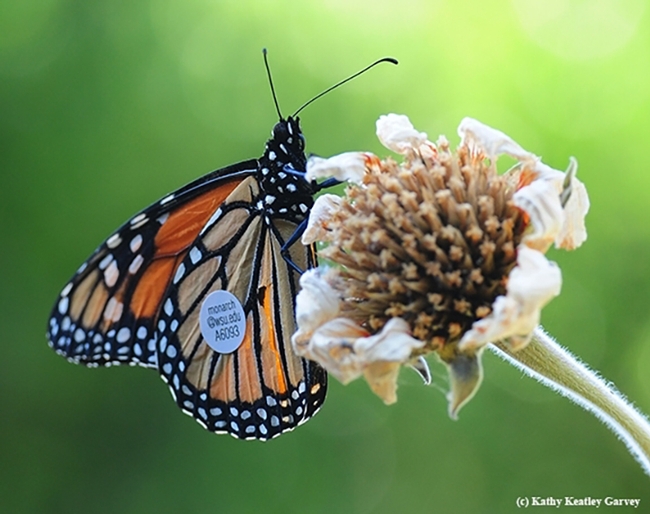
This migrating monarch flew from a vineyard in Ashland, Ore. to a garden in Vacaville, Calif. in 2016. This amounted to 285 miles in seven days or about 40.7 miles per day, according to WSU entomologist David James, who studies migratory monarchs.(Photo by Kathy Keatley Garvey)
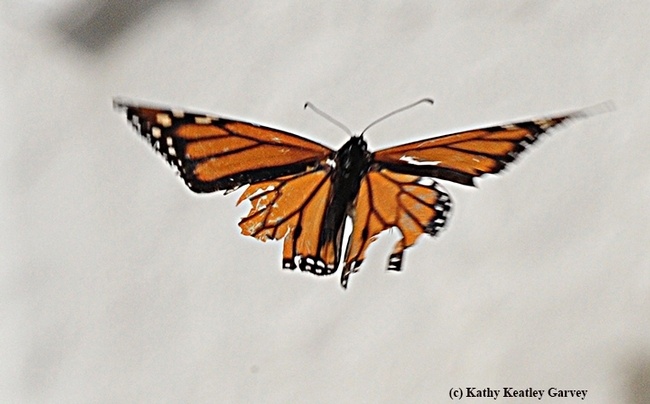
A tattered and torn migrating monarch in Vacaville, Calif. This image was taken in 2016. (Photo by Kathy Keatley Garvey)
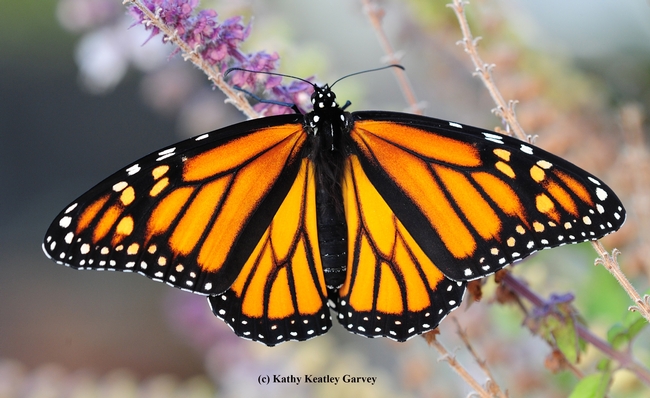
A newly eclosed female monarch. (Photo by Kathy Keatley Garvey)
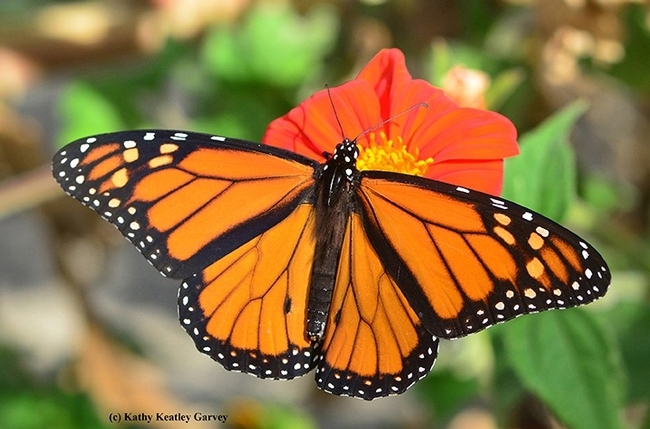
A newly eclosed male monarch. (Photo by Kathy Keatley Garvey)
Magical, Miraculous Monarch Moments
When you observe a monarch butterfly laying eggs on your milkweed--and see the predators and parasitoids circling in anticipation--act fast if...
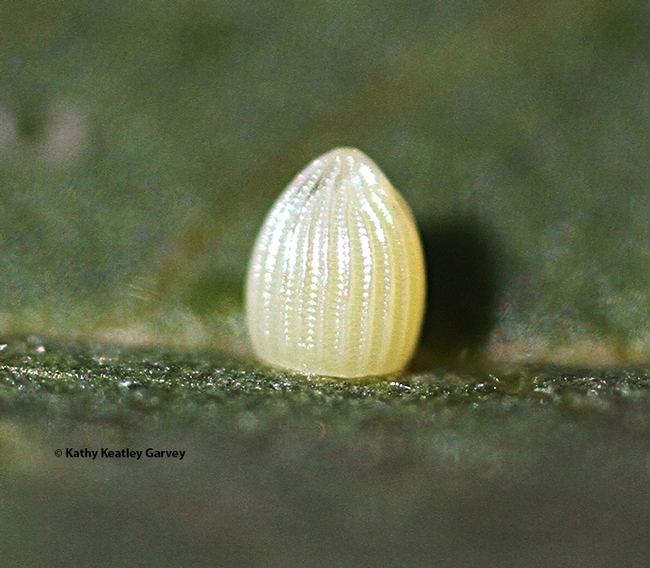
A monarch egg. Soon it will hatch. (Photo by Kathy Keatley Garvey)
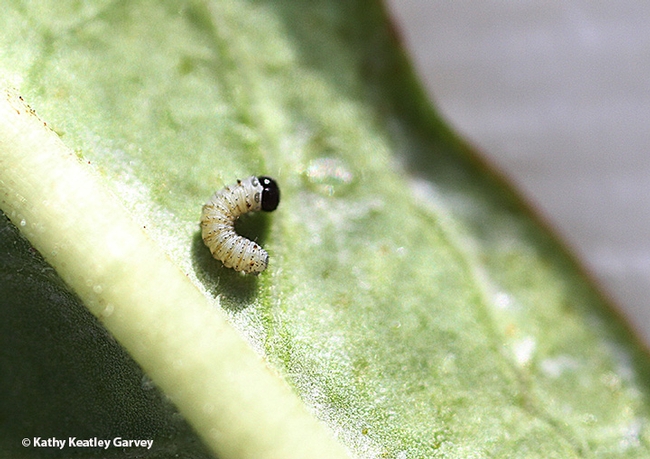
This larva or caterpillar has just hatched. Note the black head. (Photo by Kathy Keatley Garvey)
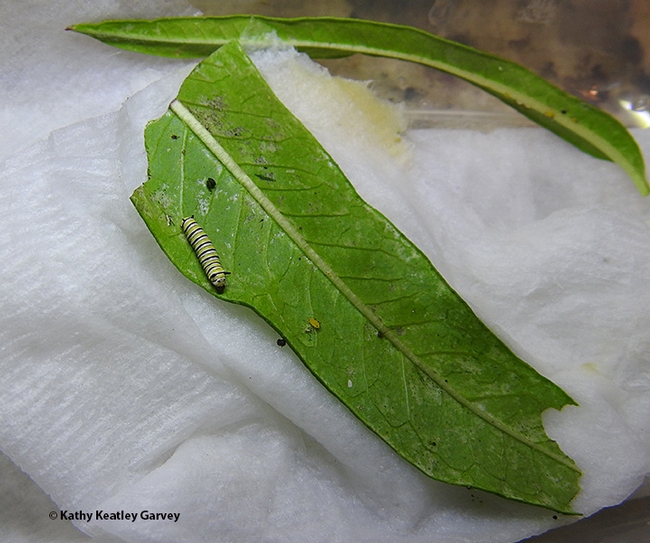
Growing, growing, growing. Now all the caterpillar has to do is eat, eat, eat. (Photo by Kathy Keatley Garvey)
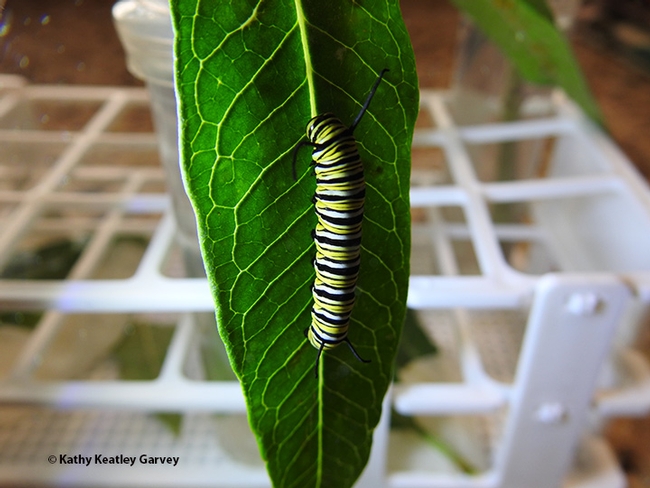
This third instar caterpillar rests on a leaf in its new environment. It was just removed from a lidded container--lidded to keep the milkweed leaf damp. Otherwise, it will dry out. (Photo by Kathy Keatley Garvey)
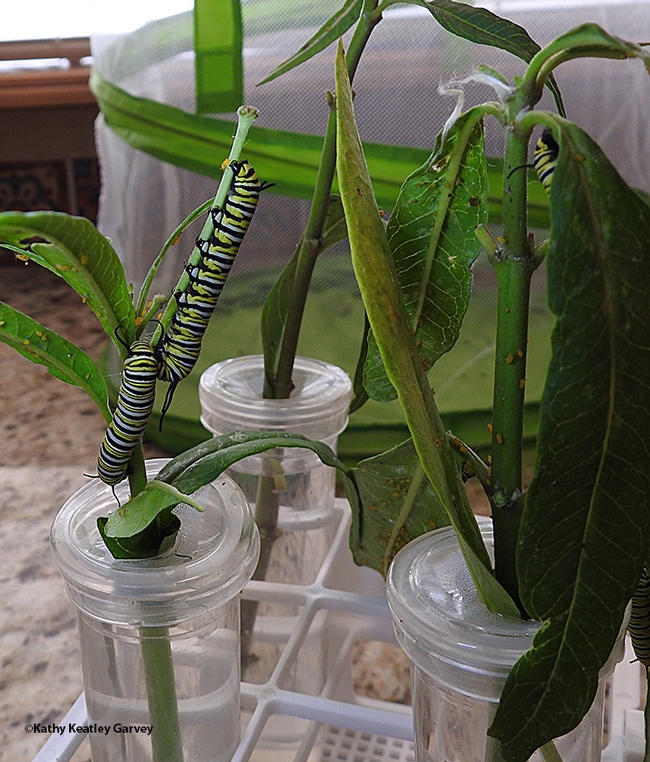
Three monarch caterpillars munching away on milkweed. Two of the 'cats just encountered one another. (Photo by Kathy Keatley Garvey)
Elizabeth Crone and the Declining Western Monarchs
"Why Are the Monarch Butterflies Declining in the West?" Professor Elizabeth Crone of Tufts University who researches monarchs (as well as bumble...
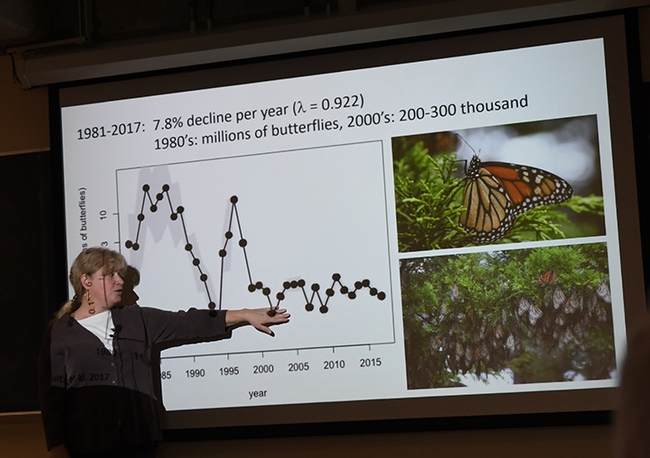
Professor Elizabeth Crone delivering a seminar on Western monarchs to the UC Davis Department of Entomology and Nematology. (Photo by Kathy Keatley Garvey)

Professor Elizabeth Crone chats with scientists following her talk. (Photo by Kathy Keatley Garvey)
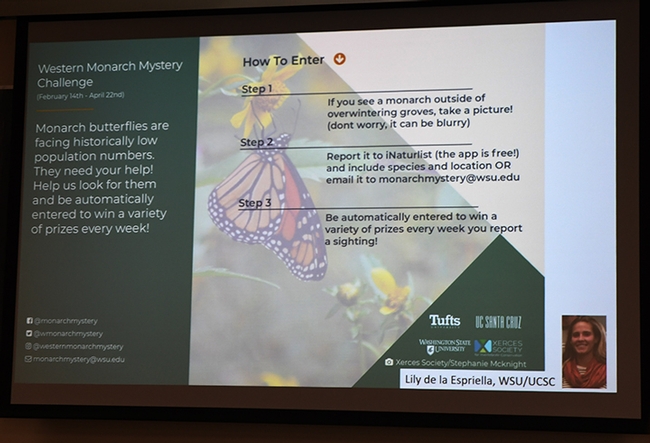
If you see a Western monarch between Feb. 14 and April 22, report it to the Western Monarch Mystery Challenge.
How Do Monarchs Know When to Migrate? Bohart Museum Open House Jan. 18
How do monarch butterflies know when to migrate? Take the case of a male monarch reared, released and tagged by Steven Johnson in a Washington State...
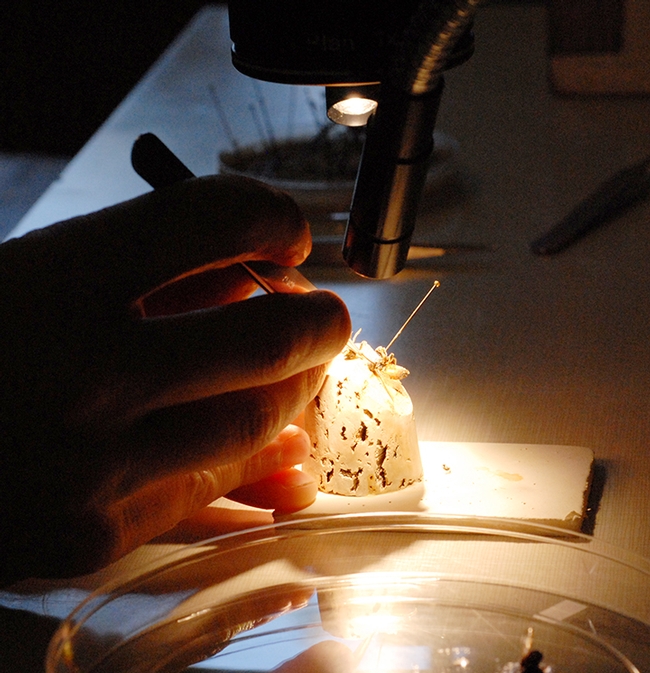
Eight microscopes will be available at the Bohart Museum of Entomology open house on Jan. 18. Visitors can view the research projects of doctoral students. (Photo by Kathy Keatley Garvey)
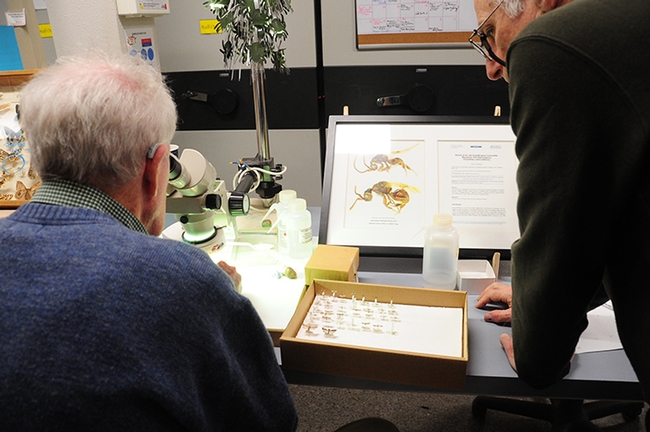
Ants will be the topic of Zachary Griebenow of the Phil Ward lab, UC Davis Department of Entomology and Nematology. This image shows emeritus professor Jerry Powell of UC Berkeley identifying insects at the Bohart Museum of Entomology. (Photo by Kathy Keatley Garvey)
The Red Invaders: Those Colorful Milkweed Bugs
If you've been finding more milkweed bugs than monarchs on your milkweed, join the crowd. Monarchs are scarce--at least around Solano and Yolo...
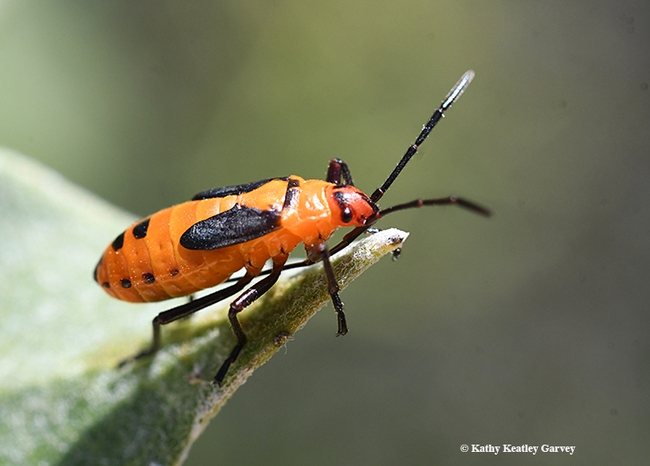
A small milkweed bug Lygaeus kalmii) stands peers over the leaf of a milkweed plant, Asclepias speciosa, in Sonoma County. (Photo by Kathy Keatley Garvey)
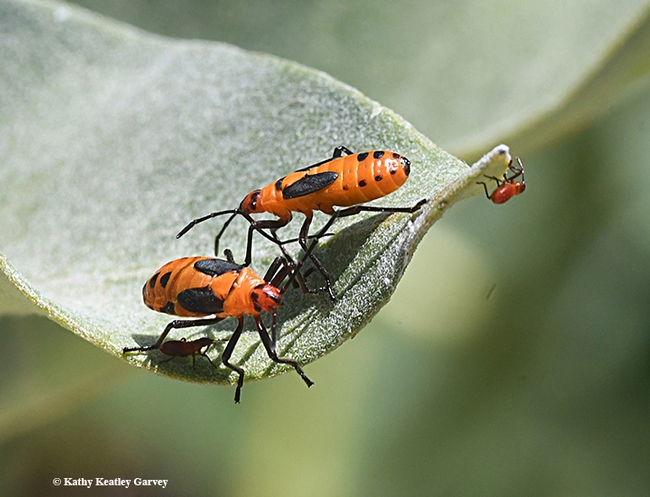
Small milkweed bugs mingling on a showy milkeed, Asclepias speciosa. (Photo by Kathy Keatley Garvey)
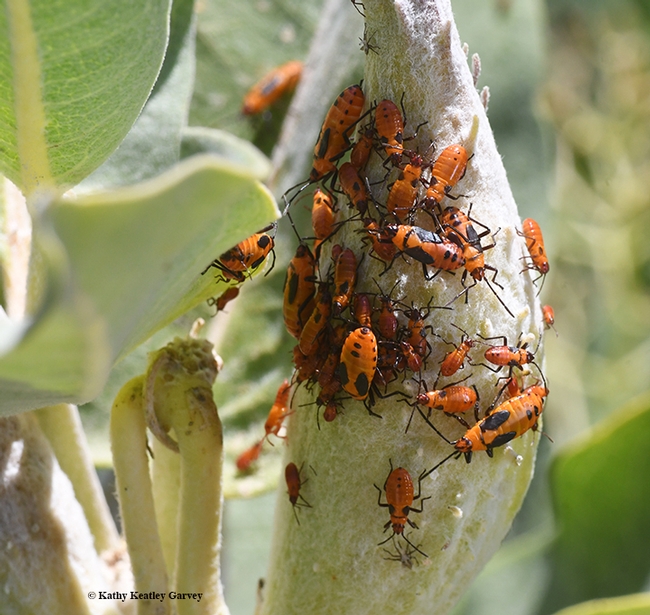
A mass of small milkweed bugs, red invaders! The blood red color sharply contrasts with the green milkweed pod. (Photo by Kathy Keatley Garvey)

